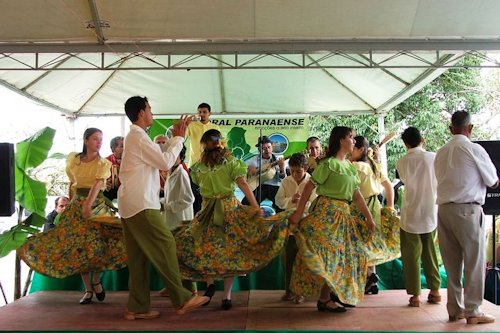
|
Colors with Undefined Names 22. Fandango Color 346 - #B53389
The first recorded use of fandango as a color name in English was in 1925.
Fandango is a lively couples dance from Spain, usually in triple metre,
traditionally accompanied by guitars and castanets or hand-clapping ("palmas"
in Spanish). Fandango can both be sung and danced. Sung fandango is usually
bipartite: it has an instrumental introduction followed by "variaciones". Sung
fandango usually follows the structure of "cante" that consist of four or five
octosyllabic verses (coplas) or musical phrases (tercios). Occasionally, the
first copla is repeated.
|
| Shown is people dancing the Fandango | |
| Return to Unusual Color Group - 3 On to Unusual Color 23 Feldgrau ⇨ | |